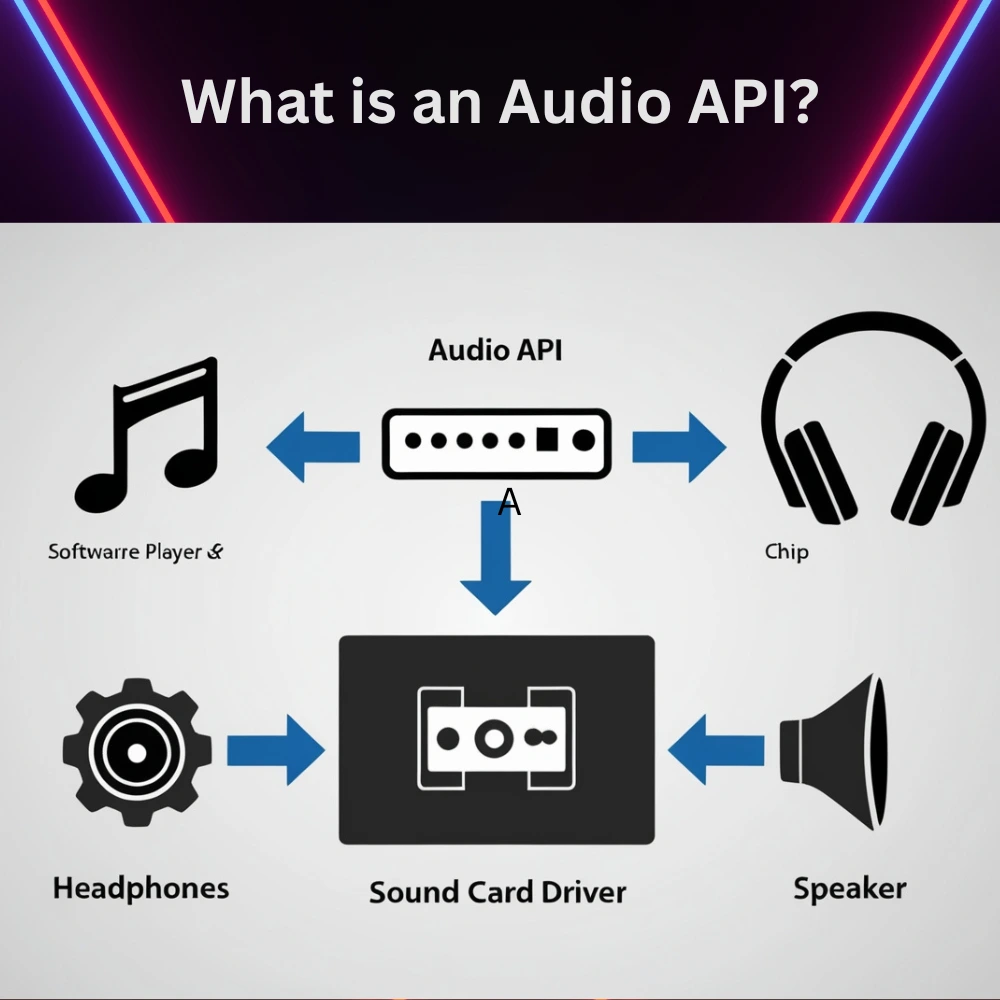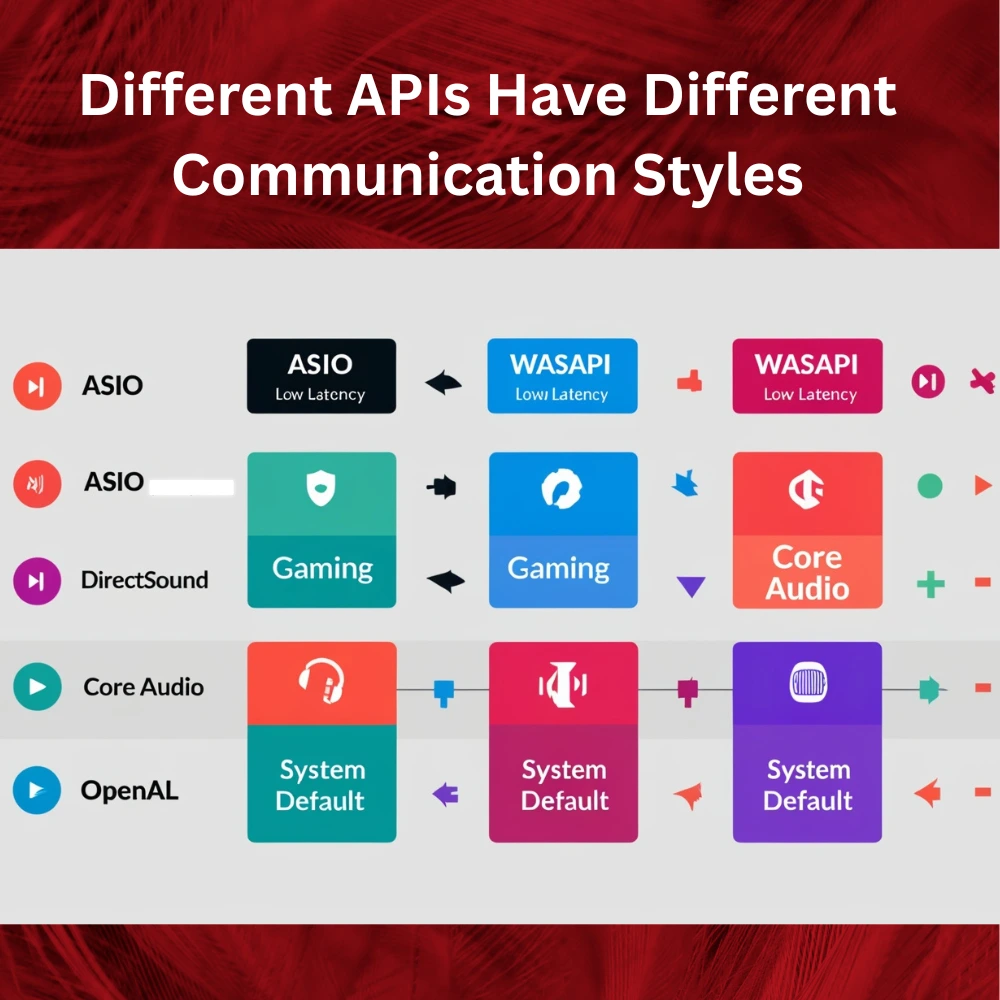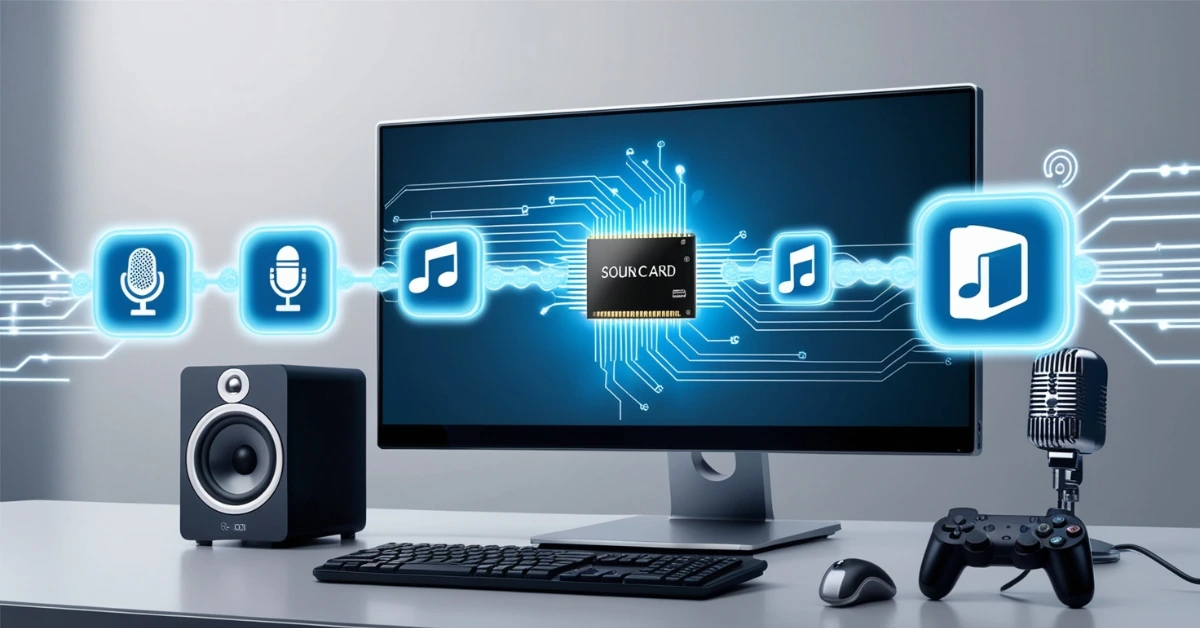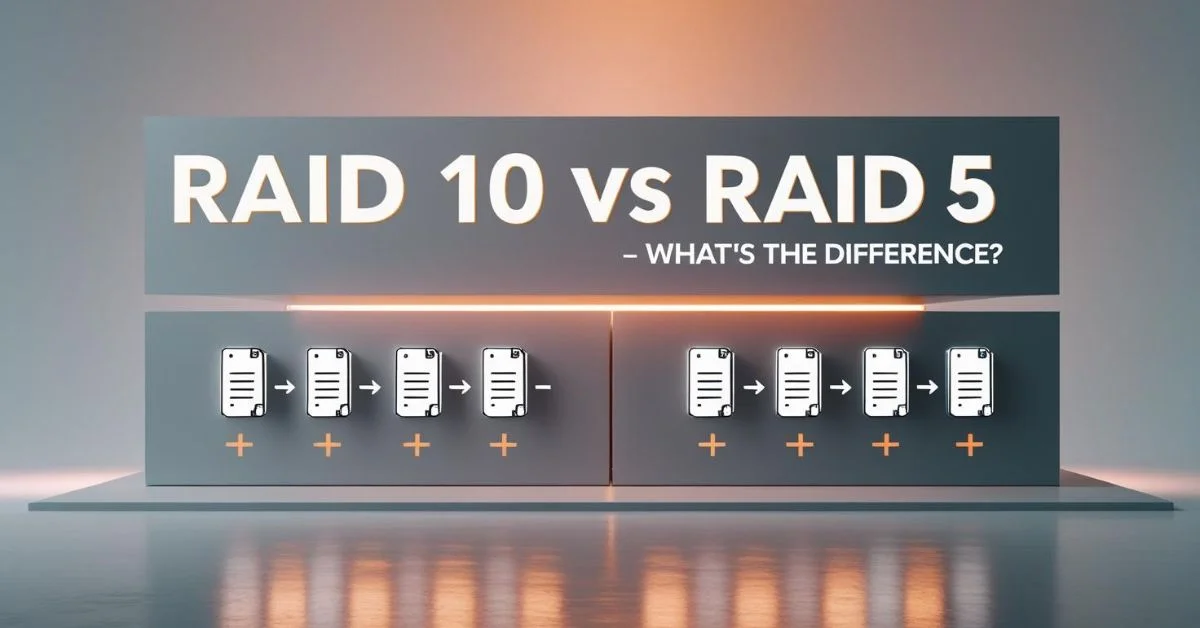If you’ve ever wondered how your computer knows how to play music, give voice commands, or stream a video without your voice sounding like a robot, it’s because of two hidden heroes working behind the scenes: sound card drivers and audio APIs. These tools work together to help your sound card translate digital signals into the sounds you hear through your headphones or speakers.
What is a Sound Card Driver?
A sound card driver is software that lets your computer communicate with the sound card. Without it, your system can’t produce sound. Installing or updating the driver ensures your computer uses the sound card correctly and fully.
Why Are Drivers Important?
- They allow your operating system (like Windows or macOS) to recognize and control your sound card.
- They unlock special features, like surround sound or high sample rates.
- They help reduce lag and improve sound quality by using the card’s built-in tools.
- Bad or outdated drivers can cause audio to cut out, crackle, or not work at all.
Modern drivers often come bundled with extra software, such as equalizers, virtual mixers or noise cancellation tools. This lets users customize their audio experience even more.
What is an Audio API?
An Audio API is a bridge between apps and your sound driver, helping software send sound instructions reliably. Like a messenger in a restaurant, it ensures your system knows what sound to play and when.
How They Work Together?
Now, let’s tie everything together. Say you’re playing a video game and you fire a weapon. Here’s what happens behind the scenes:
- The game (software) sends an instruction to play the gunshot sound.
- It uses an audio API like DirectSound or OpenAL to deliver the command.
- The API passes the request to the sound card driver.
- The driver tells the sound card exactly how to process and output the sound.
- The sound card converts the signal into analog form and passes it to your speakers or headphones, allowing you to hear the audio clearly.
This smooth teamwork ensures that sound plays exactly when it should, without delay or distortion.
Why Audio Latency Matters?
Latency means delay. In the audio world, it’s the time between when a sound is triggered (like clicking “play”) and when you actually hear it.
Low latency is very important for:
- Musicians and producers, who need real time audio feedback when recording.
- Gamers, who rely on quick sound cues to respond fast.
- Streamers and content creators, who need their voice and video to stay in sync.
APIs like ASIO and WASAPI are designed to reduce latency as much as possible by giving the software a more direct line to the sound card.
Real-Time Example: Playing a Game with Voice Chat
Let’s imagine you’re playing an online game and chatting with teammates:
- You speak into your microphone.
- The voice chat software (like Discord) uses an audio API (like WASAPI or ASIO) to send the sound to your computer.
- The API passes the command to the driver, which processes your voice input.
- The sound card sends the signal to your network so teammates can hear you.
At the same time:
- The game sends background music and gunshot sounds to the audio API.
- The API again sends them to the driver, which then tells the sound card to play them through your headphones.
- All of this happens in milliseconds, thanks to the efficient teamwork of APIs and drivers.
Behind the Scenes: What Happens Technically
When an app wants to play or record sound, it sends audio data in digital form (like 1s and 0s). The API takes this data and delivers it to the sound card driver in a format the driver understands.
The driver then:
- Sends the data to the Digital-to-Analog Converter (DAC) if it’s output sound (to speakers or headphones).
- Sends it to the Analog-to-Digital Converter (ADC) if it’s input sound (from a mic).
Coordinates with internal parts of the sound card (like amplifiers or mixers) to make sure everything runs in sync.
- Without the API, the software wouldn’t know how to contact the sound system
- .Without the driver, the instructions would make no sense to the hardware.
Different APIs Have Different Communication Styles

Not all audio APIs speak the same “language.” Some take shortcuts, while others offer full control.
- DirectSound: Was widely used in older games. It provides basic sound features but doesn’t give as much control over latency or quality.
- WASAPI (Windows Audio Session API): Supports exclusive mode for low-latency playback and shared mode for system audio. Ideal for modern Windows apps.
- ASIO: Bypasses the Windows sound system entirely. Sends audio directly to the hardware for fast, accurate playback and recording. Used by professionals.
- Core Audio (Mac): Apple’s equivalent of ASIO + WASAPI powerful and low-latency by design.
Each of these APIs has to “negotiate” with the driver to handle tasks like volume control, format conversion (e.g., 44.1 kHz to 48 kHz), and sound routing.
Why They Need to Be Compatible?
If your software uses an API your sound card driver doesn’t support well, you’ll experience:
- Audio dropouts
- Popping or crackling sounds
- Increased latency
- Features not working (like surround sound or mic boost)
That’s why audio interface brands like Focusrite or Behringer provide their own custom ASIO drivers because they’re optimized to work perfectly with certain APIs.
Mixer Functionality and the Role of Drivers
Many sound cards (especially onboard Realtek chips or USB interfaces) come with built-in mixers via their drivers. These mixers allow:
- Adjusting input/output levels
- Routing audio from different sources (e.g., mic to speakers)
- Controlling balance, effects, or EQ
The API interacts with this virtual mixer when it needs to adjust volume or route sound.
For example:
- When you turn your Windows system volume up or down, WASAPI tells the driver mixer to adjust the sound.
- When a DAW like FL Studio records your vocals, ASIO tells the driver to open a direct path between the microphone and recording software, skipping the mixer for lower latency.
How APIs Handle Multiple Sound Sources?
Ever noticed how you can watch a YouTube video, get a notification sound and play a game all at once?
That’s because shared mode APIs (like WASAPI in shared mode or PulseAudio in Linux) allow multiple apps to use the sound card simultaneously. The API mixes the sounds virtually and then hands them off to the driver to process and play.
In contrast, exclusive mode APIs (like ASIO or WASAPI exclusive mode) lock the sound card so only one app can use it. This is great for:
- Studio recording
- Gaming tournaments
- High-end audio playback
Common Problems and Fixes
Even though this system is built to work smoothly, problems can still happen:
1. Audio Lag or Delay
- Use a lower latency API like ASIO or WASAPI.
- Update your sound card drivers.
- Close background apps that may be using audio.
2. No Sound
- Check if your audio driver is properly installed.
- Make sure the API being used matches your hardware setup.
- Reboot your system and reconnect your audio device.
3. Cracking or Static Noise
- Increase the buffer size in your audio software.
- Check for driver conflicts.
- Use a dedicated sound card for better processing power.
Final Thoughts
Even though they run in the background, sound card drivers and audio APIs are crucial for:
- Clear audio playback
- Smooth live recordings
- Low-latency gaming
- Stable communication on calls and meetings
Understanding how they work together can help you:
- Troubleshoot sound issues
- Choose the right software for your needs
- Improve your audio quality with the right driver/API setup
So next time your sound runs perfectly, you’ll know it’s not just magic—it’s the smart coordination between your driver, your API, and your hardware.



